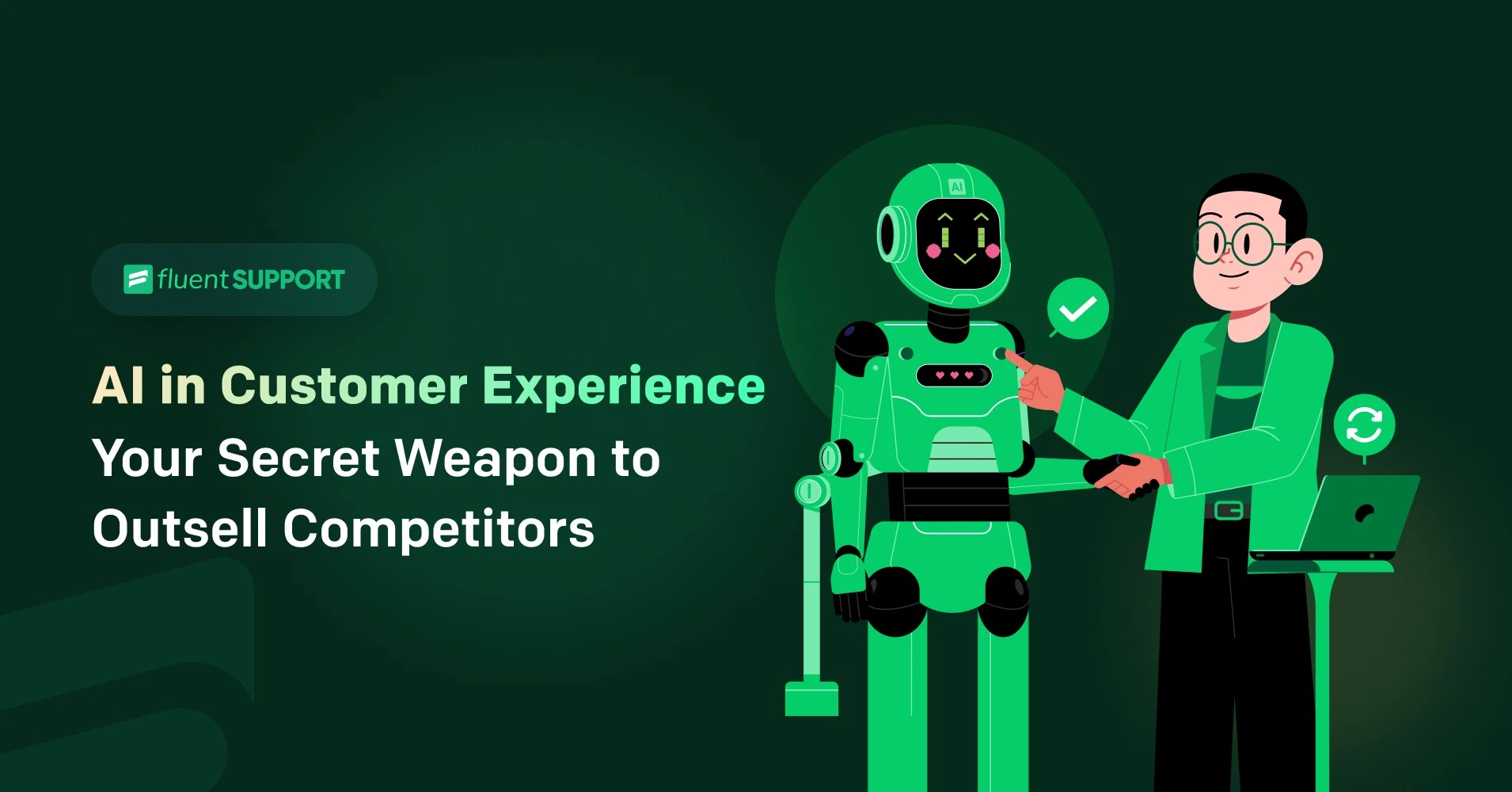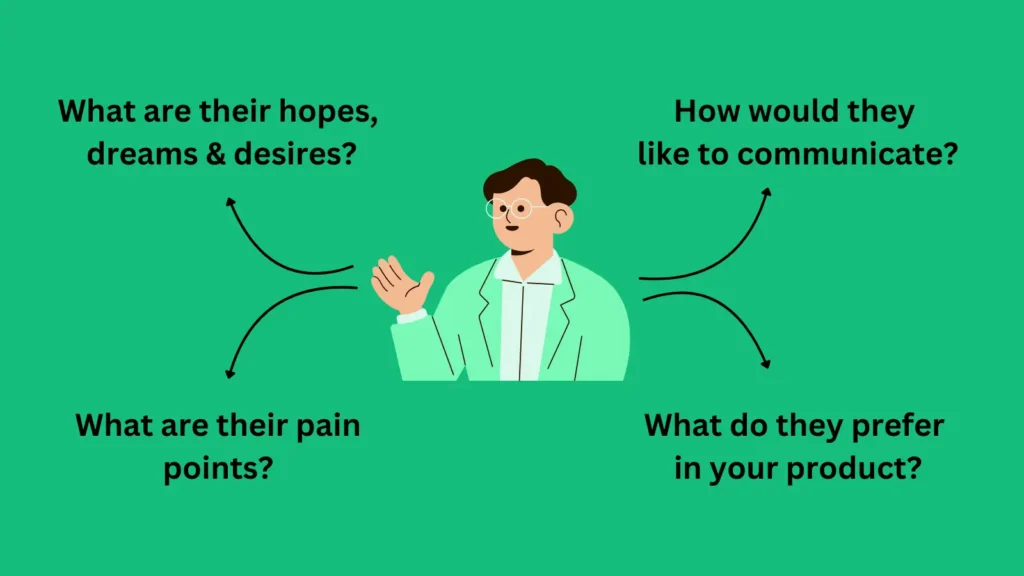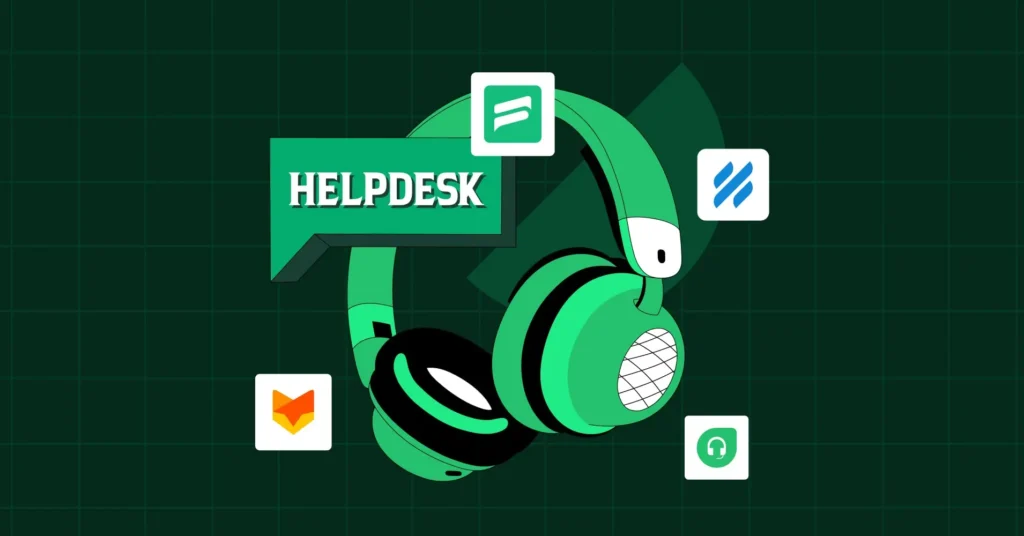
AI in Customer Experience: Your Secret Weapon to Outsell Competitors
We live in a materialistic world where people usually spend their money without hesitation. Especially, when they see value, or fancy in what they are purchasing.
In fact, with the growing e-commerce and more personalizing experiences, people are more likely to spend on products or services that improve their lives.
However, capturing the attention of your potential buyers and turning them into loyal customers requires more than just offering a solution.
You have to show them your brand is outstanding in both product and service. To do so, you need to deliver a great customer experience and exceed expectations at every interaction.
Leading companies like Amazon, Google, and Microsoft are great at this because they always find new ways to give extra value with better experiences.
They use Artificial Intelligence in their marketing and services to create more advanced and personalized experiences, which helps them stay ahead of their competitors.
What is AI customer experience?
AI customer experience is the use of Artificial Intelligence such as machine learning, intelligent analytics, Autobots, and smart agents to improve customer interaction. It allows you to offer fast, efficient, personalized, and seamless experiences to users.
Furthermore, generative AI helps you to analyze advanced customer data by applying powerful algorithms to process large volumes of unstructured data, extracting key insights and patterns.
As a result, you will get a clear image of your dream buyer’s avatar.

These reports can reveal deeper customer behaviors, preferences, and trends. Ultimately allowing businesses to make more informed decisions about marketing, product development, and customer engagement strategies.
Why should businesses need to focus on AI?
In modern business, AI is not just about customer service chatbots or personalized experience. It has the potential to improve how companies collect and analyze data, personalize product features, and improve overall service.
That’s why many businesses across the world are prioritizing machine learning as their key marketing strategy.
For example, Amazon uses Artificial Intelligence to identify potential customers’ behavior and predict purchasing intent. As a next step, they are utilizing these reports to deliver personalized ads to the right buyer at the right time.
According to Reuters, “Amazon has increased their revenue by 13% ($143.5 billion in revenue in the first three months) in this present year, compared to the same period of the year 2023.” And all these happened because they were able to run more personalized advertisements for the people.
Moreover, AI is not only transforming business operations but also creating a cycle of better service, increased engagement, and higher customer satisfaction. With its advanced analytical ability to deliver leads in real time, AI is transforming industries across the world.
A study by Accenture shows that “by the year 2035, AI can increase corporate profitability to 39%.”

Now, let’s discuss several phases of practicing Artificial Intelligence to improve customer experience and outsell your competitors.
How can you use AI to improve customer experience and outsell competitors?
We are now at the point where most of the businesses are trying to use AI from every possible aspect to outsell their competitors. But just implementing machine learning in your system is enough to get customers and generate a high volume of sales?
Yes, you are right! Practicing a transformative technology without having a deeper understanding may not work. The worst case, if you use it in the wrong way then it may backfire on your sales and growth.
To help you understand the powerful use of Artificial Intelligence in customer experience, we will now discuss AI-driven approaches to transform your business.
Fun fact: We’ll help you use AI so efficiently that it gets itself out of the job.

Let’s dive in.
Using AI in research to develop products and improve customer experience
When you go out in the market with a product, you want people to buy and use it. But how many people have the intent to buy? In “Sell Like Crazy”, Sabri Suby demonstrates the 3% rule that “only 3% of a market is actively looking to buy something, while the rest are in different stages of awareness.”
That means the fewer people have buying intent, the more they’ll miss out on seeing the value of your product. So, building a valuable product and finding the best-fit market is essential for any business to stand out.
However, the process is going to become more data-driven and easier with the continuous advancements in AI.
And here’s how.
1. Analyzing customer data for targeted insights
Knowing your audience is not just about knowing the preferences of one individual. Every potential customer can have different choices. So, what you can do is use AI for data analysis and break down your research into a functional hypothesis.
AI can help you filter your customer data, from purchase history or support tickets, and present you the targeted insights. These insights allow you to target your potential buyers and create personalized experiences that align perfectly with customer preferences.
2. Predicting market trends with AI analytics
A business always needs to keep up with the market trends to survive and grow. But with the basic human limitations, it’s not always possible. For a long period of time, people have used two methods to predict the market.
- Fundamental analysis: It includes running competitor analysis, creating industry needs, and overall economic conditions report.
- Technical analysis: Analysis of the patterns of trading activities and uses statistics to run hypotheses for future needs.
While these methods may have been useful, they also have problems. Too much data and fast-moving marketing are always obstacles for these methods to keep up with. Also, there’s a common saying that people aren’t perfect.
This is where machine learning algorithms are great at doing things that traditional methods struggle with. AI systems are able to automate large amounts of data and quickly spot market patterns that help you predict the exact market needs.
3. Personalizing product development based on AI insights
Creating a product that your audience wants is crucial for any business. As machine learning can easily capture how people are using your product, you can decide the best possible features and direction for your business.
For example, Zomato, an Indian food delivery company, noticed that food lovers wanted to try dishes from other cities. To meet this demand, Zomato launched “Intercity Legends,” a service that uses airports and delivery networks to bring customers their favorite foods from different cities.
Furthermore, Zomato used AI to identify popular dishes and combine them with stories. Like connecting butter chicken to its origins in Old Delhi. This approach helped Zomato create a service that customers were excited to use.
Integrating AI features into the product to elevate the customer experience
As we already discussed AI-driven research for market trends and product development. The second phase of this AI customer experience is the integration of AI features into your product.
As AI-based products are growing rapidly in the online market, personalized product experiences with AI-driven recommendations are essential. With those vital data to customer needs and market trends, you need to synchronize your products with machine learning to enhance usability.
1. Enhancing product usability with AI-powered interfaces
AI-powered interfaces have become increasingly popular among businesses and screenagers. It makes businesses or be more specific towards their customers’ needs, as well as allowing customers to enjoy more personalized experiences.
For example, Netflix employs artificial intelligence to keep note of what each user watches, what they like, and what they rate highly. Then based on this information, it suggests other shows and movies that users are likely to find interesting. This personalized touch is a big reason why Netflix is such a hit!
2. Boosting Product Efficiency with AI Automation
Customers always prefer fast and seamless experiences, and AI automation takes it to the next level. It is the future of user experience, where tasks are completed effortlessly.
Imagine controlling your home with just a simple voice command. Google makes it possible with its futuristic AI-based automation. You can control your AC, dim your lights, adjust the thermostat to the perfect temperature, and more. These kinds of seamless experiences can be seen with technologies like Google Home.
And now, many big brands are also on the verge of introducing these kinds of automation in their products. Because it will allow them to touch the highest point of effortless customer experience.
3. Leveraging AI for Real-Time Customer Insights
Real-time customer insights help businesses to understand and address customer needs quickly. This leads to faster problem resolution and happier customers.
AI enhances these insights in several ways by leveraging advanced technologies to provide deeper and more actionable information.
For instance, chatbots provide instant answers to common questions, while predictive analytics help anticipate future needs. Contextual recommendations give agents useful suggestions based on current issues, and customer journey mapping tracks interactions to improve service.
For instance, Fluent Support uses AI to summarize customer tickets and analyze their tone. This integration helps agents respond more effectively and efficiently for better customer experience.
Enhancing Customer Service with AI for a Better Customer Experience
The final need to improve customer experience is to provide exceptional service. And, there is no question that customer service is about to take a massive leap forward with the enhancing power of AI.
By leveraging AI-driven chatbots, insights, reports, etc. your helpdesk will get a massive boost in customer satisfaction.
But before that, you have to analyze the approaches of AI in customer service to figure out which your business is lacking at the moment.
1. Use AI-Powered Customer Support to boost agent productivity
AI doesn’t do all the work for your service representatives. But it can help them to provide more personalized customer service.
By providing quick ticket overviews, generative answers, sentiment analysis, etc. can allow your reps more time on complex issues.
This boosts their productivity and reduces customer support burnout. As a result, you will get faster resolutions and happier customers.
2. Implementing AI Chatbots for Instant Support
Nowadays, AI chatbots are broadly adopted among online businesses. It enables 24/7 support at a low cost. Through these chatbots, your support team can handle a large amount of customer queries without sacrificing quality or response times.
Furthermore, these chatbots are available to collect all the customer data while interacting which allows you to know your customers’ needs and create future strategies.
3. Utilizing AI for Predictive Customer Service
What if you could resolve your customers’ issues before they even reach out to you? AI makes this possible through predictive customer service.
By analyzing customer behavior and reporting data, AI can anticipate problems and offer solutions at the same time. This can keep your customers happy and reduce the need for reactive support.
Wrapping up
While AI enhancing customer experience, it’s important to remember that overusing AI can also be harmful. You can not fully be dependent on machines to do everything for you. There’s always a fundamental need for human touch.
A perfect example of this is the movie WALL-E. In this sci-fi, the whole human race has become entirely dependent on AI and automation for their every need. People were physically inactive and socially disconnected. They no longer have to make decisions for themselves, and this over-dependency leads to a decline in their overall well-being.
Similarly, In business, relying wholly on AI can disconnect you from your customers. If AI manages every aspect of your customer’s experience, it can feel impersonal.
So, it’s crucial to balance automation with human interaction to keep the customer experience personalized and empathetic.
Start off with a powerful ticketing system that delivers smooth collaboration right out of the box.













Leave a Reply